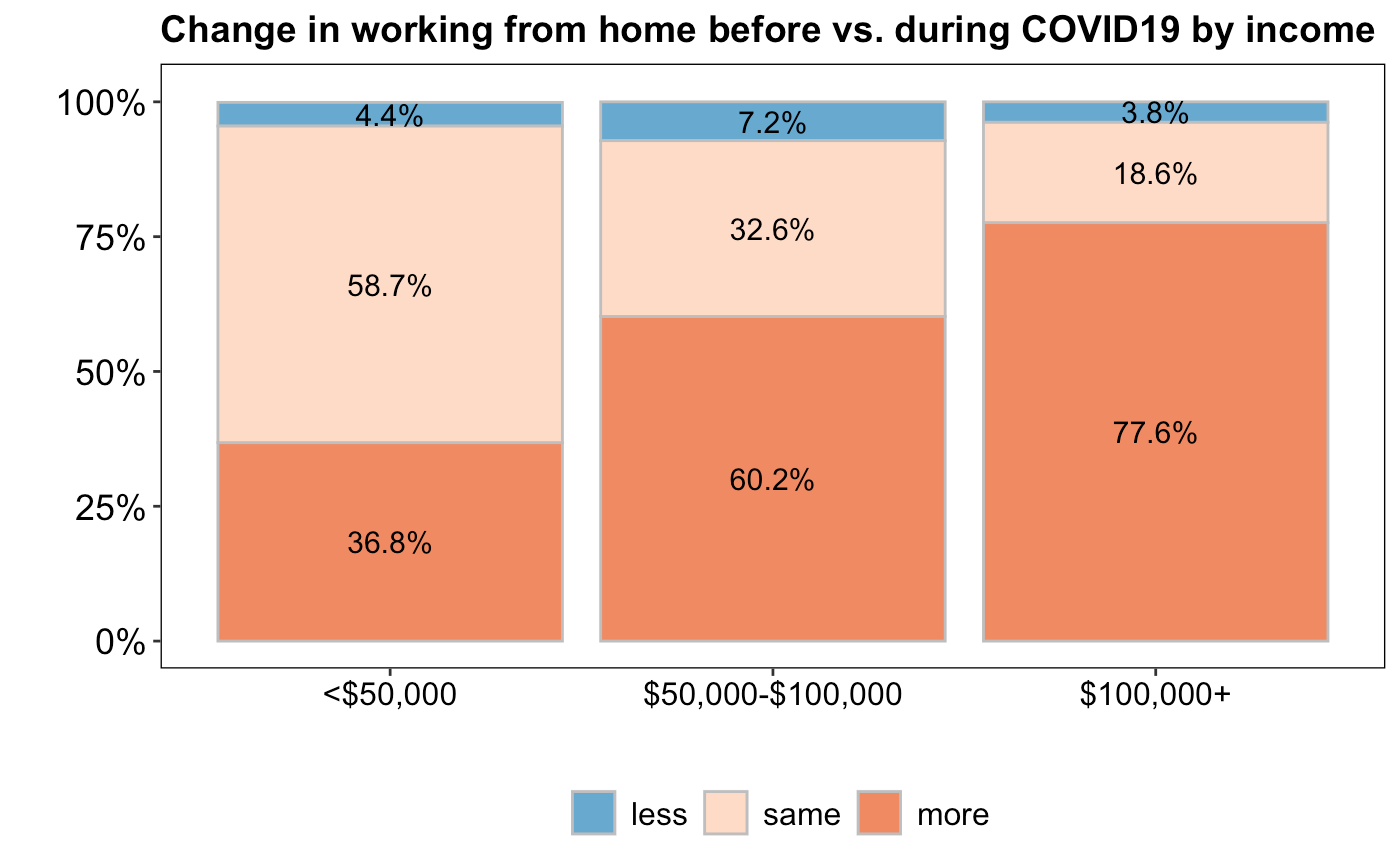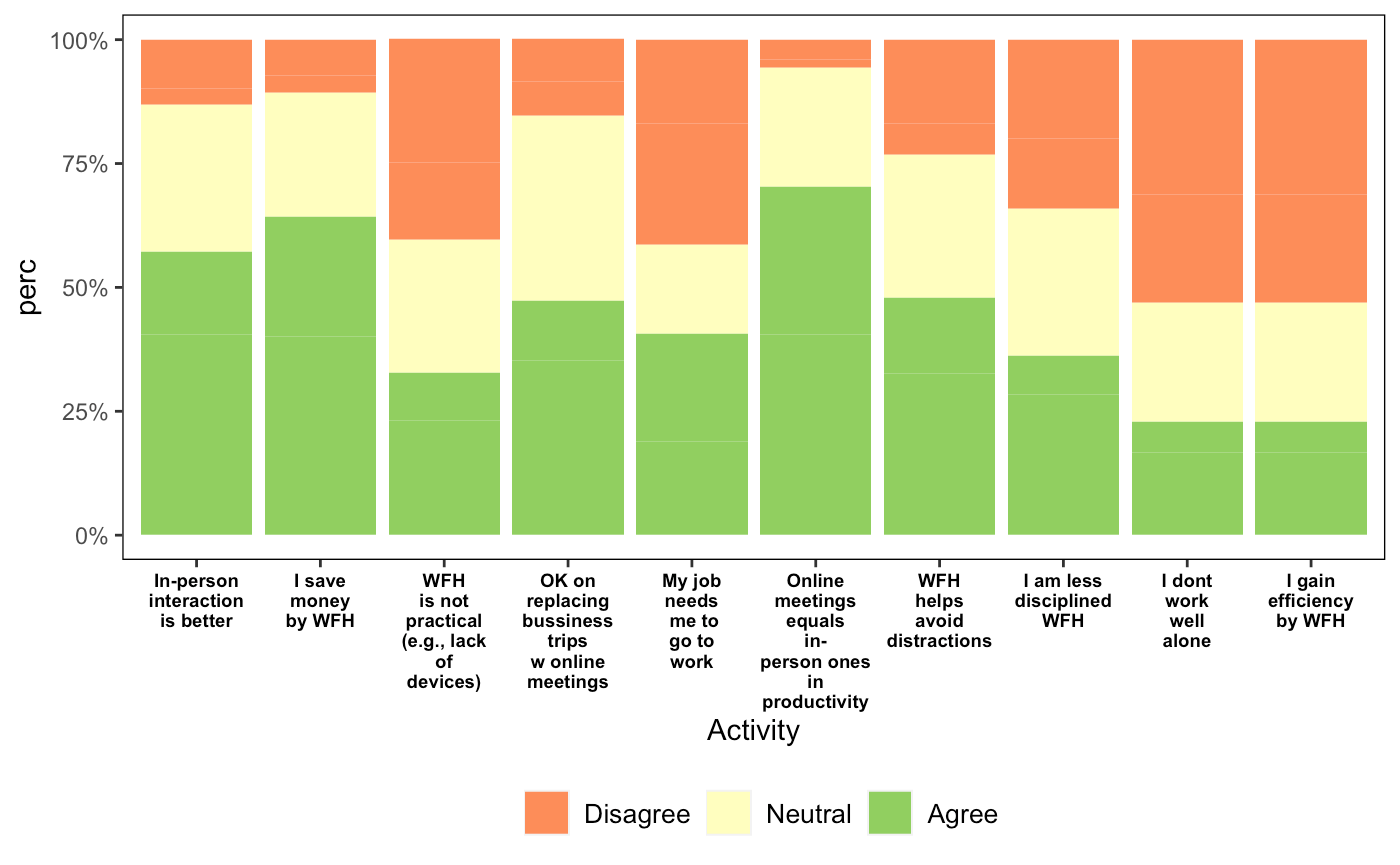
October 8, 2021
By Junia Compostella and Nathan Lemphers
COVID-19 has upended many aspects of our lives—including how we get around. This post shares new data on the impact that the pandemic has had on urban mobility in two major Canadian cities and links this with insights on the transportation policies needed to build back better. In particular, we explore how the pandemic reshaped commuting patterns and vehicle preference.
The Institute of Transportation Studies (ITS) of University of California Davis conducted an online travel survey in order to better understand the societal effects of the COVID-19 pandemic, especially the mobility-related impacts. The survey investigated two timeframes: before the pandemic (February 2020 or earlier) and during the first wave of the pandemic (March to June 2020). While the full survey project covered 15 metropolitan areas in the United States and 2 in Canada, this post focuses on the results for Toronto and Vancouver in Canada. An online survey was administered to 996 residents of Vancouver and Toronto, with results weighted based on the city’s actual populations. We present a few of our key results below, namely on commuting and vehicle preference alongside a discussion of some of the potential policy implications. Further results of this project can be found here.
For those not working frontline jobs, the pandemic revealed new-found flexibility in commuting. In both Toronto and Vancouver, around 65% of the respondents who were employed at the time COVID19 hit, and who had the option to work from home, increased the degree to which they worked from home (see Figure 1). The increase in telecommuting was particularly pronounced among higher-income respondents (earning $100,000 per year or more).

Figure 1. Change in working from home before vs. during COVID19 pandemic, by income group
More than 50% of telecommuters agreed that “productivity in online meetings equals in-person ones”, yet, they also seemed to prefer “in-person interactions” (see Figure 2). They stated that they “saved money” by working from home, which suggests that employers should consider offering optional work-from-home arrangements for post-pandemic times. For major urban centres, promoting continued work-from-home arrangements would have the obvious benefit of reducing road traffic and congestion on public transit systems. In 2020, the Government of Canada offered a simplified temporary tax credit for home office expenses. To encourage more (or continued) telecommuting in the future, this credit could be increased or made permanent.

Figure 2. Opinions on teleworking
However, not everyone has the option or preference to work from home. Unsurprisingly, those respondents who kept travelling to work (at least once per month) during the pandemic’s first wave reported that they primarily drove in a vehicle alone. The fear of infection likely deterred many people from using other forms of mobility. That said, even before the onset of the pandemic, commuting alone in a car was overwhelmingly the most commonly used mode of getting to work in Vancouver (45%) and Toronto (46%), according to the 2016 national census.
Once the pandemic is over, traffic congestion may worsen if fears of infection from using shared or public transportation persist. To encourage commuters out of private vehicles, policymakers should consider increasing investments to make our public transportation system safer. For instance, additional government funding could support enhanced cleaning services or pay for more buses or enhanced biking and walking infrastructure, which would reduce crowding on public transit and our roads. Moreover, given the housing affordability crisis in Canada and the deepening climate crisis, ambitious transit-oriented housing development and transit infrastructure that facilitates multi-modal travel (park and ride/bike and ride facilities at transit hubs) is urgently needed.
Around 14% of respondents in both metropolitan areas reported that they plan to buy a new car once the pandemic is over. As expected, our data suggest that lower income households (< $50,000 per year) are less likely to purchase a new vehicle versus middle ($50,000 to $100,000 per year) or higher income families ($100,000 or more per year). Most of those interested in changing their household vehicles post-pandemic (82%), across both cities, are interested in a vehicle that uses alternative fuels i.e., gasoline hybrid (e.g. Toyota Prius), plug-in hybrid (e.g. Honda Clarity, Toyota Prius Prime), battery electric (e.g. Nissan Leaf, Tesla Model S), hydrogen fuel cell (e.g. Toyota Mirai), flex-fuel vehicle (runs on gasoline or ethanol), among others.
Looking more broadly, even among respondents who do not plan to replace their vehicles (i.e., 84% of the total sample), 66% say they are interested in alternative fuels. This suggests an openness across a wide segment of the population in two major Canadian cities towards adopting alternative vehicles. To accelerate the decarbonization of passenger transportation, which along with the oil and gas industry is the largest and fastest growing source of greenhouse gas emissions in Canada, additional policies are needed to both stimulate demand and ensure there is a supply of cleaner vehicles to meet that demand.
Thankfully, transportation policy ambition is racing ahead across Canada. Electric vehicle purchase incentives are being rolled out in many provinces, most recently, Prince Edward Island, Nova Scotia, and Yukon (with some notable holdouts: Alberta and Ontario). Federally, the recently re-elected Liberal Party pledged, among other things, to set a mandatory target that all new light-duty and passenger vehicles would be zero emissions by 2035, extend and expand electric vehicle (EV) purchase incentives, and expand a national EV charging network.
Targeted policies that make electric vehicles less costly and easier to use, when implemented alongside work-from-home incentives and major public investments into affordable housing and transit and active mobility infrastructure, are a major part of building back better after this devastating pandemic. In sum, our survey results reveal just how much transportation patterns changed during the first lockdown in Toronto and Vancouver and, crucially, shed additional light on what a more sustainable mobility system of the future could look like.
This project, titled “Impacts of COVID-19 Pandemic on Transportation Patterns in US and Canadian Cities”, was funded in part by the Economics and Environmental Policy Research Network (EEPRN) and the Greening Growth Partnership, with funding awarded through Smart Prosperity’s 2020 Special Call for Proposals: Climate and Environmental Policy in the context of COVID-19. Further details of this and other funded projects are available here.